As you breathe in, you’ll draw in an abundance of fresh, crisp mountain air. You’ll hear the crunching of leaves underfoot and the sound of waterfalls in the distance. Birds will be chirping, and you’ll be relaxed and without a care in the world.
Welcome to my National Parks of Croatia guide, based on my 20+ years of exploring them!
I’ll take you through places to see rich flora, dense forests, a small island, places to see wild boar, rare birds, grey wolves, and countless waterfalls.
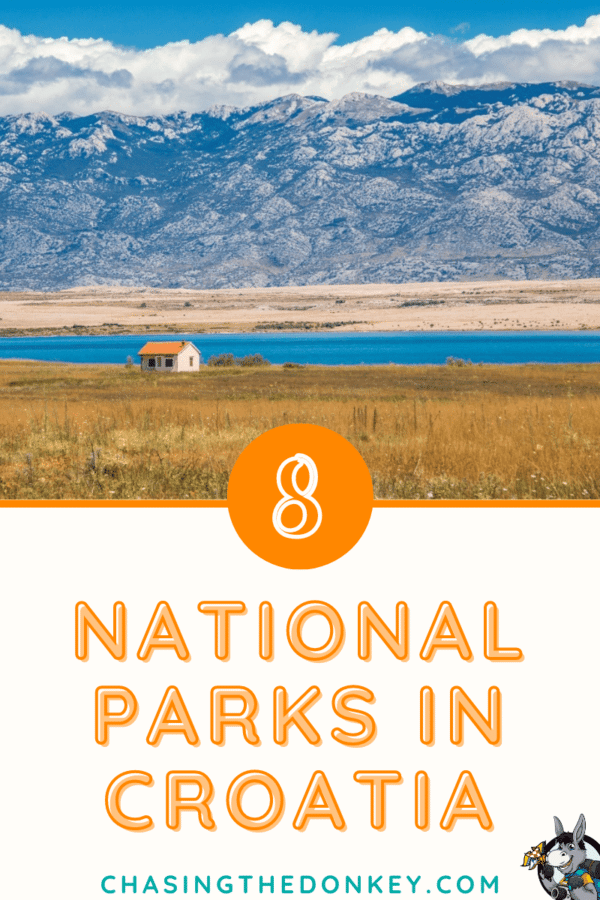
This list of Croatia national parks is one you’ll be sure to add to your travel bucket list.
Photographers, hikers, and nature lovers will wander along in any of the eight national parks in Croatia and be in awe. I have said it before, and I’ll repeat it, like an old broken record – Croatia is more than just beaches.
In Croatia we are blessed with eight national parks in Croatia. Each offers you something magical and beautiful.
- Plitvice Lakes National Park
- Kornati National Park
- Krka National Park
- Sjeverni Velebit National Park
- Paklenica National Park
- Mljet National Park
- Brijuni National Park
- Risnjak National Park, Croatia
Now, let us take a look at each of them in detail.
Skip Ahead To My Advice Here!
1. Plitvice Lakes National Park – Stunning Waterfalls And Lakes

Listed as a Croatian UNESCO World Heritage site, Plitvice Lakes National Park is a magnificent gift from nature. It is one of Croatia’s most fantastic tourist attractions, with lakes so still that you can see your reflection as if it were a mirror.
It is the largest and most popular national park in Croatia, situated between the mountains of Mala Kapela and Lješevica. Founded in 1949, it now attracts more than a million visitors yearly.
The main drawcards of Plitvice Lakes National Park are the 16 interconnected emerald lakes and, of course, the famous Plitvice waterfalls and cascades, beginning at 25 meters to a staggering 78 meters tall.
The Plitvice Lakes are renowned for their distinctive colors, which range from azure-blue to green and depend on the number of organisms, minerals, the season, and the amount of sunlight in the water at the time.
Plitvice is readily available as a day trip from Zagreb or Zadar. I recommend taking a private transfer to Plitvice from the city you are staying in for the easiest and quickest way to get there.
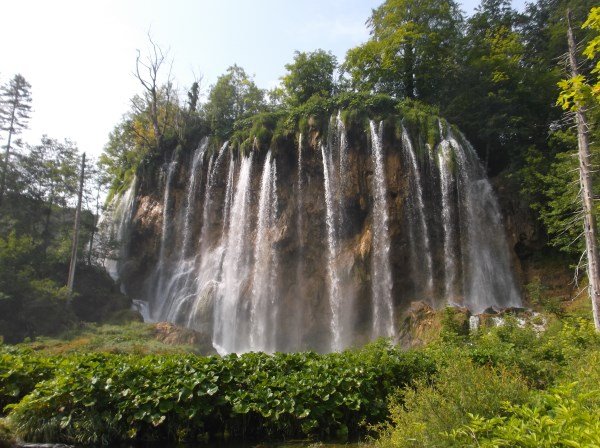
Plitvice Lakes National Park can easily be visited and explored in a day as a super-popular day trip. An average visit lasts between two to eight hours, depending on the length of your hike. Even if you spend just two hours, that is enough time to see the great lake!
However, you are encouraged to arrive at the park entrance as early in the morning as possible, perhaps spending the night at a B&B nearby as the park gets exceptionally crowded around midday. This way, you can enjoy the exceptional natural beauty in peace and quiet when you get there early.
You should buy your entrance ticket as soon as you know your date, or it may sell out as Plitvice National Park now restricts the maximum number of daily visits.
2. Mljet National Park – Total Natural Beauty

Mljet National Park is one of those Croatia national parks for people who like a little bit of adventure and stunning scenery. Situated on the Island of Mljet in Croatia’s deep south, Mljet National Park is bordered by two saltwater lakes.
It’s truly a hidden gem, offering superb kayaking, swimming, hiking, and, of course, a great place to relax and sunbathe.
As is often the case with small Mediterranean islands, Mljet is shrouded in myths, fables, and stories. Some claim that Paul the Apostle was shipwrecked on the islands, while others say it was Malta. Another legend tells how the goddess Calypso kept Odysseus captive here.
Is it true or not? No one knows. What is a fact, though, is that Benedictine monks used to live on Mljet almost 1,000 years ago.
They lived on a rather unusual site. In the center of the island lies a lake, which in turn has its own island, on which stands a former 12th-century Benedictine monastery now turned café. Besides being a fascinating historic site, it also makes for a great place to kayak and enjoy coffee.
Daily ferries to Mljet from Dubrovnik, and during the summer months, day trips can be arranged from Korcula, Dubrovnik, Makarska, and the Peljesac peninsula.
Brands We Use And Trust
3. Krka National Park – A Paradise Of Cascading Waterfalls

If you’re looking for waterfalls in Croatia, visiting the Krka waterfalls is a must. Yes, Plitvice Lakes gets way more attention, but Krka National Park has the larger waterfalls. It’s also easier to get to!
The huge Krka waterfalls are located in Krka National Park and can easily be visited on a day trip from the major coastal cities in Dalmatia.
The biggest and most famous waterfall is Skradinski Buk, a truly spectacular and not-to-be-missed waterfall with no fewer than 17 cascades. This is as picture-perfect as any waterfall gets. As with Plitvice Lakes, you cannot swim in the waterfalls here (new since 2021).
The park has several educational walking paths and trails, pointing out the area’s history and wildlife. Over 200 different bird species call Krka National Park home. Keep your eyes open, and you might spot a golden eagle, griffon vulture, or peregrine falcon. Fortunate visitors could even catch a glimpse of river otters frolicking in the Krka River.
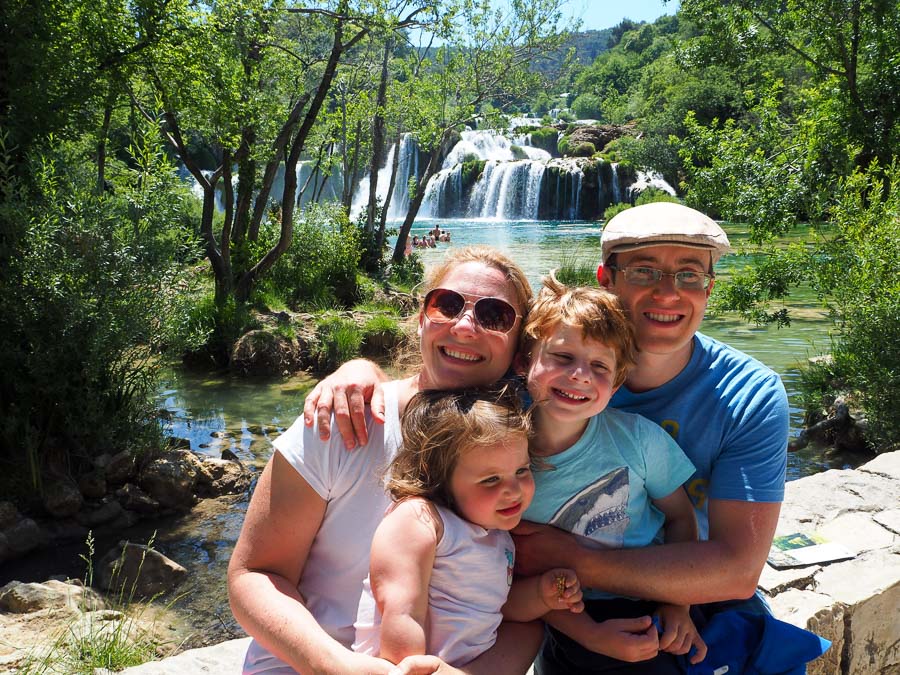
Besides the hugely popular Skradinski Buk waterfall, you can visit a 14th-century medieval fortress on the Krka River. Alternatively, take a boat ride to the Krka Monastery on Visovac Island, somewhat reminiscent of Slovenia’s Lake Bled.
The old mills on the Krka River have now been turned into a museum, and thanks to Emperor Franc Josef II, who erected a viewing post for his wife, you can easily admire the upper section of the waterfalls from there.
Getting to Krka National Park is accessible from the old city of Sibenik, Split, or arriving by boat from Zadar or Skradin. Private transfers are also available from Zadar, Split, and all the major centers and are affordable.
Krka National Park has a walking path that takes approximately 2 hours to navigate – including time for photos.
4. Risnjak National Park
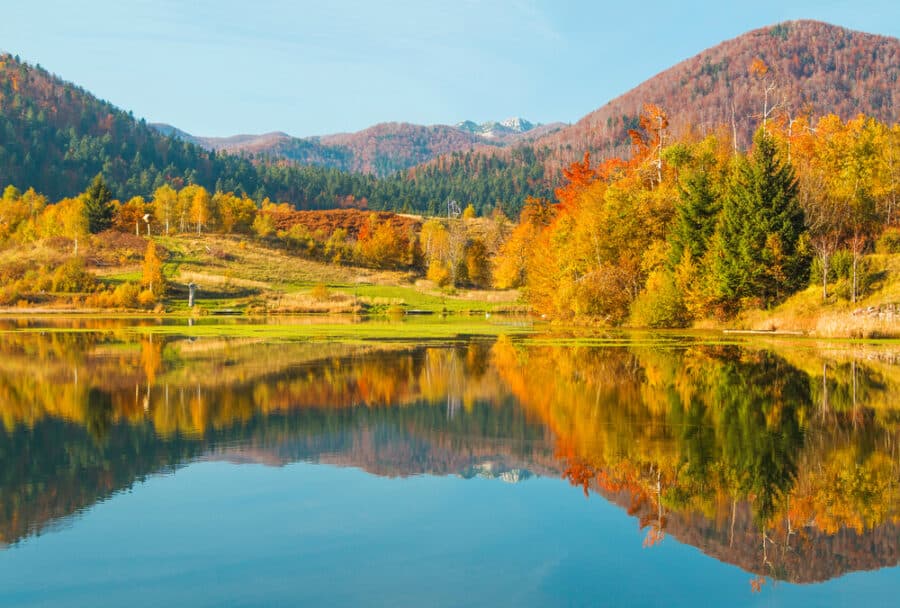
If you want to get away from it all and rekindle your connection with nature, head to Risnjak National Park, one of the least-known national parks in Croatia.
You’ll find the limestone-formed valleys and rolling mountain ranges of Risnjak just 15 kilometers from the sea in the most mountainous part of Croatia. Yet, as wild as it may be, it’s still surprisingly accessible, situated off the main road that connects Rijeka and Zagreb.
Want to hear the howl of a wild wolf? Have you ever seen a deer or lynx, the park’s most famous resident and namesake, or perhaps a brown bear?
Risnjak National Park has an observatory that can be booked in high season and a log cabin during winter, where you and your camera can become one with these wild animals.
There are far too many activities to list for Risnjak National Park, although one that you won’t find in any other national park in Croatia is fly fishing.
You can grab a fishing ticket and spend all day angling in the rich Kupa River’s crystal-clear waters, so pack your waders. However, there are some restrictions on the tackle, and some fish species can only be taken when in season. Remember to check with the local authorities.
Other popular things to do in Risnjak are hiking and rock climbing. Various trails traverse these rugged landscapes in the Dinaric Alps.
Because the ridges are typically barren and rocky, the views are epic, stretching toward the horizon and taking in forested valleys, mountain summits, and imposing cliffs. For instance, you can hike to the 1,528-meter-high summit of Mount Risnjak, the highest point and namesake of the park. Needless to say, you’ll be blown away by the panorama.
Risnjak National Park sits between the Adriatic climate and the continental climate. This means you can wander the park on a summer’s day at a comfortable 20°C. Winters, on the other hand, are often snowy and freezing cold.
5. Paklenica National Park – A Haven For Hikers & Climbers
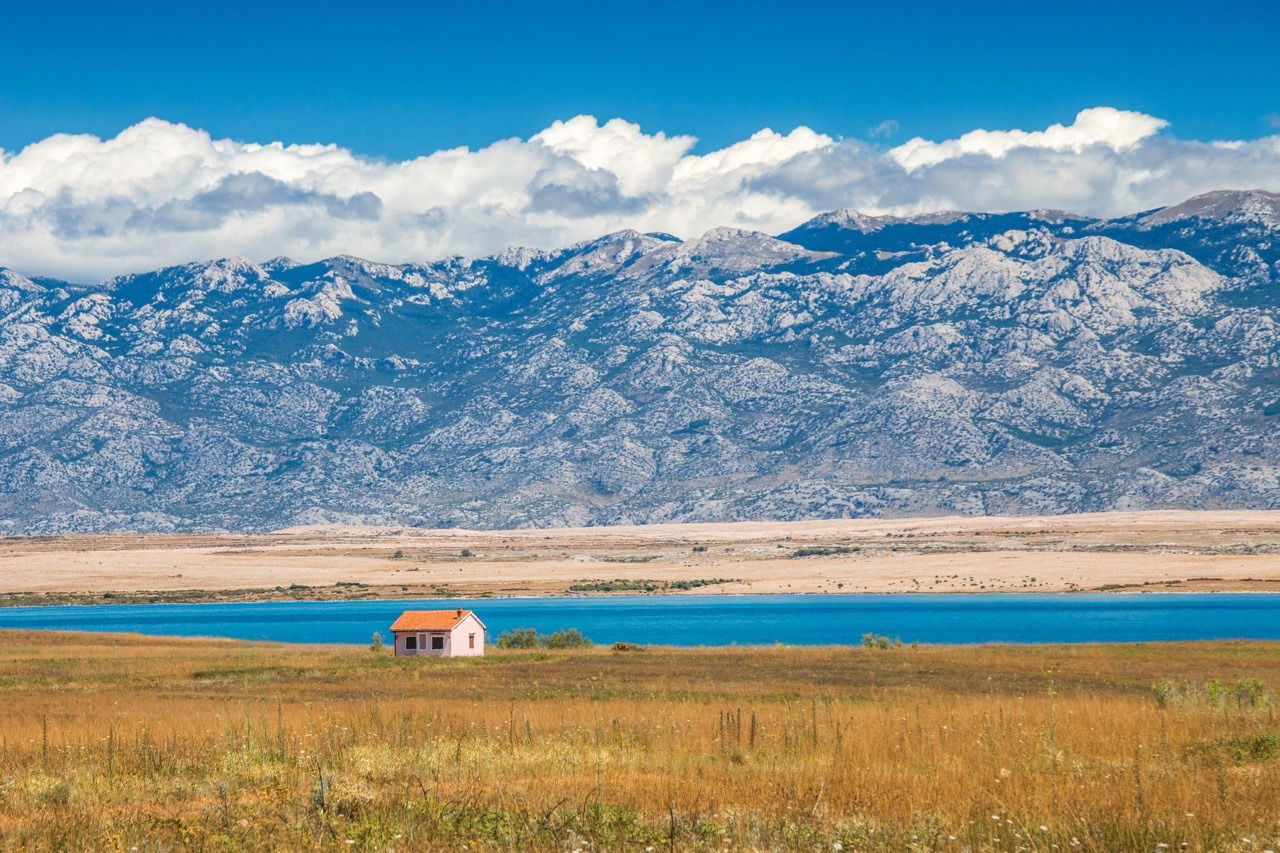
Located near the Velebit Mountain range and Zadar, Paklenica National Park consists of two torrent gorges, Velika (Big) Paklenica and Mala (Small) Paklenica, which run parallel to one another.
This wilderness of barren mountains, pine forests, and deep-cut canyons lies within easy reach for most tourists in Croatia. The park is a great day trip from many of the Adriatic Sea coastal towns, and it also makes for a perfect place to spend a few days away from the busy Dalmatian coast,
Do pack your comfortable shoes if you plan to visit this national park, though. With 150 kilometers of trails and paths to explore, you’ll need them. The various courses suit everyone, from those who like a slow, easy walk to avid and experienced trekkers.
Paklenica National Park is not just for hikers; it also attracts rock climbers, mountaineers, and spelunkers. There are several challenging ascents as well as caves to be explored.
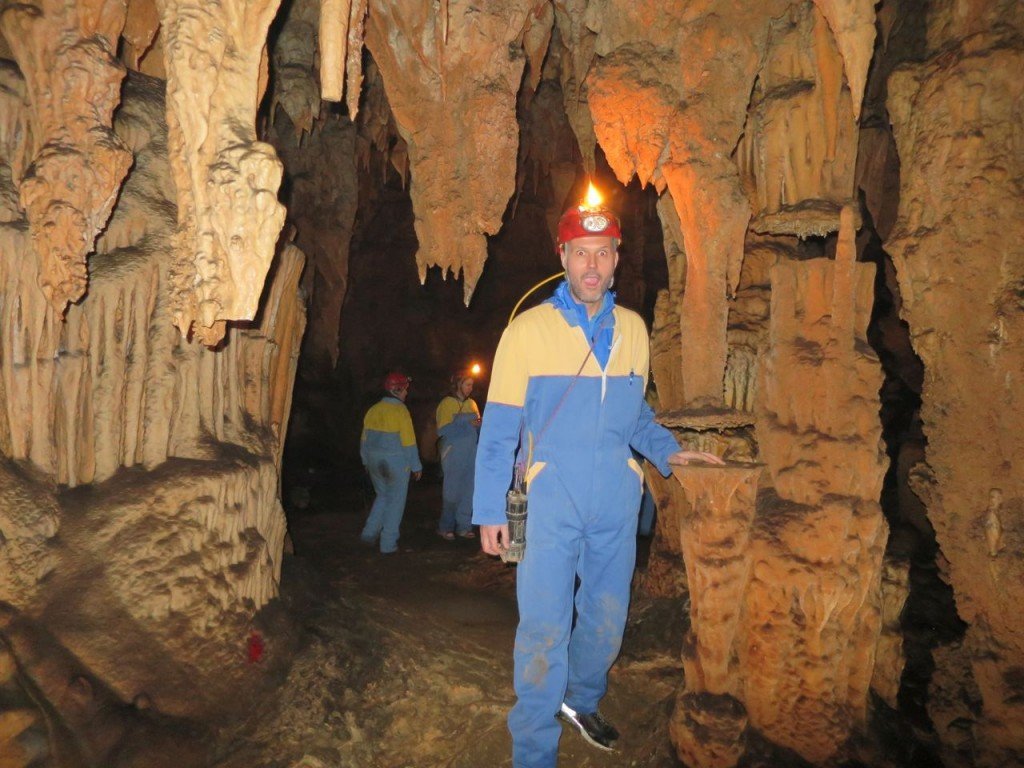
If you’re up to walking two hours along a mountain trail, you can take a guided tour of the Manita Peć Cave. This cave is 175 meters long and is divided into two halls filled with gorgeous stalagmites and stalactites.
All that natural variety does not only attract people but many different animals, too. Besides more than 1,000 plant species, the park is home to countless birds, including eagles, falcons, and even brown bears (which, must be said, are a rare sight).
6. Sjeverni Velebit National Park

If you want an active holiday, then you should head to Sjeverni Velebit National Park, also known in English as Northern Velebit National Park. The Velebit Mountains divide the Adriatic coast from the continental part of Croatia.
These mountains are home to two national parks: Sjeverni Velebit and the above-mentioned Paklenica. The Velebit makes for a gorgeous photo backdrop, often resembling a fake Hollywood movie backdrop.
In Sjeverni Velebit National Park, you can do everything you would typically want to do in a national park, including cycling and hiking. Arguably, the star attraction in this Croatia national park, however, is the Velebit Botanical Garden.
Established in 1967, this botanical reserve lies near the Zavižan Mountain Hut, which is Croatia’s oldest high-altitude weather station.
Almost 1,500 meters above sea level, the garden has around 300 different plant species, showcasing these mountains’ biodiversity. The garden is also the starting point of many hiking trails leading up to three nearby mountain summits, Velika Kosa, Balinovac, and Veliki Zavižan.
Additionally, for a truly unique holiday experience, the park offers an evening stargazing program. The program is called Stars above Zavižan, and for less than 20 euros, you’ll be driven to the Zavižan area and be taken on a night walk for a full hour of stargazing with a guide.
7. Kornati National Park

Kornati National Park is possibly the most extraordinary of Croatia’s national parks, an archipelago of the most densely grouped islands in the Mediterranean.
Consisting of 89 islands, islets, and reefs along 238 kilometers of coastline, it’s marine heaven. You’ll definitely want to make sure you find as much time in your itinerary as possible while on holiday in Croatia to sail along the nautical paradise that is Kornati National Park. I promise! It’ll be a trip you won’t soon forget.
If you plan to sail through the national park yourself, you must purchase a permit, the proceeds of which go to the park’s protection, maintenance, and promotion.

Alternatively, Kornati National Park day tours can be arranged in many places, including from Zadar with us! Note that unless you have your own boat, the only way to visit the park is by organizing a boat excursion. (Additionally, some areas are so vulnerable that visitors aren’t allowed to go there.)
Pack your snorkel and mask, as no visit to the national park would be complete without peering into the sea and marveling at what’s below the water’s surface. If you are a diver, you might like to arrange a driving tour in one of the nine designated scuba diving areas within Kornati National Park.
If you’re all about eco-tourism, few places are better destinations for you to visit than the Kornati Islands. The landscapes are as pristine as you’ll find them anywhere in Europe. Locals operate virtually all tours, often fishermen who return to their primary profession after the busy tourist season.
8. Brijuni National Park
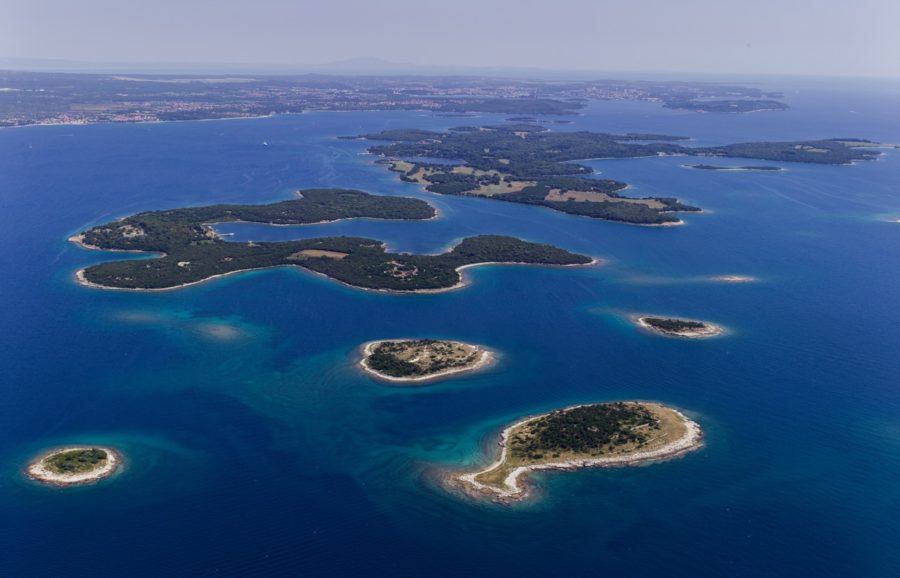
An archipelago of 14 islands, Brijuni National Park lies off the west Istrian peninsula. Most islands are off-limits to tourists, yet one main one welcomes and caters to visitors: Veliki Brijun.
It was on Veliki Brijun Island that over 200 dinosaur footprints were discovered. Another claim to fame is that the island was the home of Tito, Yugoslavia’s leader after World War II, for a while. He had his own zoo, which is now a safari park, one of the island’s main attractions.
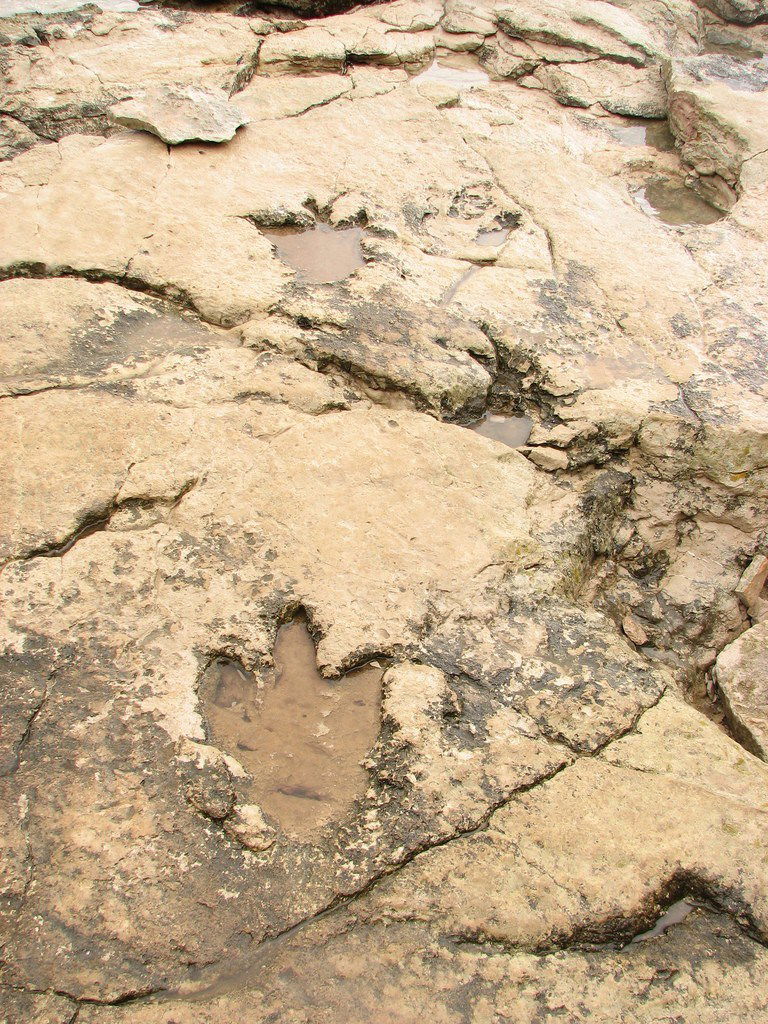
Other areas of interest in Brijuni National Park include archaeological sites of two ancient Roman villas and the 5th-century St. Mary’s Church, which is said to have been used by the Knights Templar in the 13th century. Also in the national park is a Byzantine Palace and museum.
Once you’ve had your dose of history, there is still plenty left to do in the national park by way of sports. You can play a few rounds of golf, or perhaps a game of tennis, practice your archery skills, or explore by bike.
A 13-kilometer bike route begins (and ends) at the Veliki Brijun harbor and runs past all the main sights, a great way to get around on a sunny day.
If you’d like to spend the night in the national park, you can book a room at places like Hotel Karmen, Hotel Istra-Neptun, and a few villas near the harbor.
Move This Adventure To Your Inbox & Get An Instant Freebie

No spam. Unsubscribe at any time.
Best National Parks In Croatia FAQs
How many national parks are there in Croatia?
Croatia currently has eight national parks, each offering unique landscapes and natural wonders.
What are some of the most popular national parks in Croatia?
Some of the most popular national parks in Croatia include Plitvice Lakes National Park, Krka National Park, Paklenica National Park, and Brijuni National Park.
What is the best time to visit Croatia’s national parks?
The best time to visit Croatia’s national parks is during the spring (April to June) and autumn (September to October), when the weather conditions are pleasant, and the parks are less crowded than the peak summer season.
Are there any entrance fees for Croatia’s national parks?
Yes, entrance fees are charged for visiting Croatia’s national parks. The fees vary depending on the park and the time of year. It’s advisable to check the official park websites for the latest information on entrance fees.
Are there guided tours available in the national parks?
Yes, most national parks in Croatia offer guided tours led by knowledgeable park rangers. These tours provide valuable insights into the park’s diverse flora, fauna, and geological features.
Can I swim in the lakes and waterfalls of Croatia’s national parks?
No Swimming is not allowed at Plitvice Lakes and Krka National Park. However, at Mljet and Kornati, you can. Always follow the park’s rules and guidelines to protect natural habitats and the environment.
Are the national parks accessible by public transportation?
While some national parks may have limited public transportation options, it’s often more convenient to reach them by car. Many visitors prefer renting a car or joining organized tours to explore the national parks efficiently.
What are some outdoor activities available in Croatia’s national parks?
Croatia’s national parks offer various outdoor activities, including hiking, trekking, birdwatching, wildlife spotting, camping (where allowed), and exploring scenic viewpoints.
Have you been to any one of these national parks in Croatia? Which was your favorite?
National Parks In Croatia Websites
These Croatian national parks provide an abundance of choices for activities and photo opportunities. You can find out about entrance fees and hours of operation at each national park website listed below.
Alternatively, the Croatian Ministry of Environment and Nature has set up this web portal, which details everything you need to know about all the Croatian national and nature parks. Be sure to take the virtual walk; it’s incredible!
I also should mention Papuk Nature Park – the only UNESCO Geopark in Croatia – which may be Croatia’s most underrated park and is most certainly worth visiting!
So, there you have it; from finding the best hiking trail to the highest peak, you now know the best way to navigate these parks.


I just loved Mljet and Krka national park. They were so pretty! But seeing these pics… I have more parks to discover in Croatia!
Kind regards,
Esther.
I’m linking to your blog on my linkpartner page!
Croatia wins! I’m so happy to be there this summer, can’t wait!
LOVE Plitvice Lakes. I think it’s my favourite place in the world. Now I want to go back and check out all the other ones mentioned here!
Beautiful! I LOVE the idea of the star gazing tour! Another tip to stick away for when I visit :)
Wow beautiful photos. This is a part of the word I really want to spend time in. My hubby and I went to Dubrovnik for only 1 day (off a cruise) but it was all it took for us to know we wanted to see much more of this country
I visited Mljet and Brijuni before independence, but I have never been to the others. I would love to return to Brijuni to see if it’s any different now than when it was a Yugoslav National Park. And I feel ridiculous that I’ve never been to Plitvice.
I have a passion for National Parks. These look fabulous!! Each one has something I would love to see although my heart is drawn to waterfalls to photograph. Loved Krka photo! Visiting National Parks outside the US is now on my ‘before I kick the can’ list! Thanks for sharing the beauty!!
The aerial view of the Kornati Islands National Park is so beautiful!
And the rock formations in Sjeverni Velebit National Park look so unique.
We tried desperately to take a day trip to the Kornati Islands when we were in Zadar but unfortunately they were all booked out! It looks an amazing area though I imagine the best way to see them is on a yacht. Next time!
These pictures are beautiful! I’d really love to visit the caves at Paklenica, they look gorgeous.